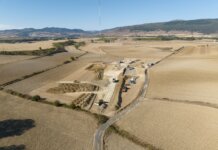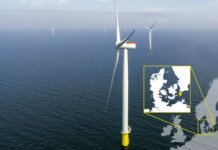IBM says its power- and weather-modeling technology can help utilities increase the reliability of renewable energy resources, such as wind and solar.
Using weather prediction and analytics to accurately forecast the availability of wind and solar energy will allow utilities to integrate more renewable energy into the power grid and help reduce carbon emissions.
IBM says its system, Hybrid Renewable Energy Forecasting (HyRef), uses weather modeling capabilities, advanced cloud-imaging technology and sky-facing cameras to track cloud movements near real time, while sensors on the turbines monitor wind speed, temperature and direction. When combined with analytics technology, the data-assimilation based solution can produce accurate local weather forecasts within a wind farm as far as one month in advance, or in 15-minute increments.
Additionally, HyRef can predict the performance of each individual wind turbine and estimate the amount of generated renewable energy by using local weather forecasts. This level of insight will enable utilities to better manage the variable nature of wind and solar, and more accurately forecast the amount of power that can be redirected into the power grid or stored. It will also allow energy organizations to integrate other conventional sources such as coal and natural gas.
‘Applying analytics and harnessing big data will allow utilities to tackle the intermittent nature of renewable energy and forecast power production from solar and wind, in a way that has never been done before,’ says Brad Gammons, general manager of IBM's Global Energy and Utilities Industry. ‘We have developed an intelligent system that combines weather and power forecasting to increase system availability and optimize power grid performance.’
According to IBM, State Grid Jibei Electricity Power Co. Ltd. (SG-JBEPC), a subsidiary company of the State Grid Corporation of China, is already using the system to integrate renewable energy into the grid. This initiative led by SG-JBEPC is phase one of the Zhangbei 670 MW demonstration project, the world's largest renewable energy initiative combining wind and solar power, energy storage, and transmission.
By using the wind forecasting technology, phase one of the Zhangbei project aims to increase the integration of renewable power generation by 10%. The efficient use of generated energy allows the utility to reduce wind and solar curtailment while analytics provides the needed intelligence to enhance grid operations.



